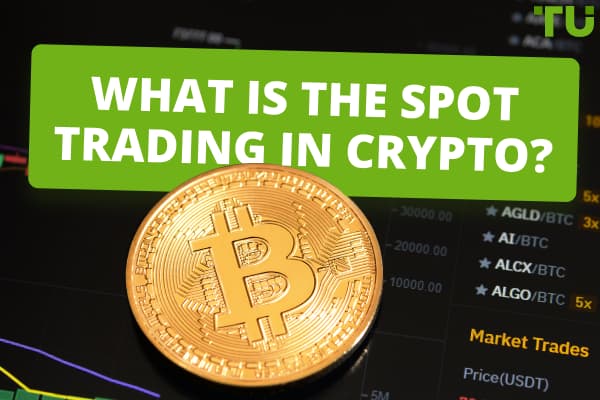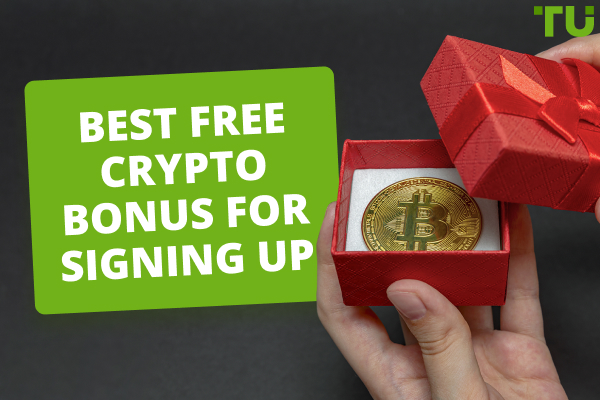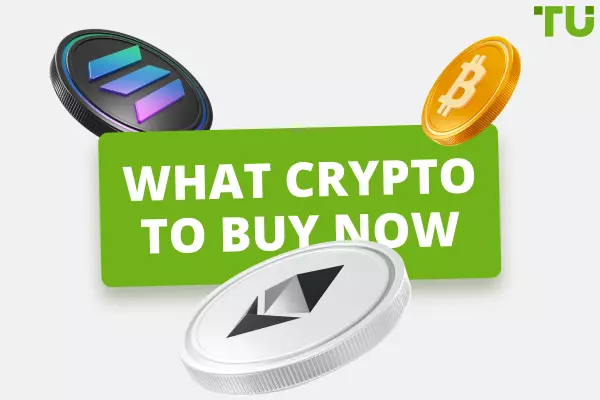How to Invest in DeFi in 2024
Defi offers a good investment opportunity for beginners and experienced investors. The information below covers defi tokens and the associated risks and benefits. You can utilize this knowledge to make wise decisions about your venture into defi. Read on to learn the investment procedures and where to buy your defi coins.
Start investing in DeFi tokens right now with ByBit!What are DeFi Tokens?
Defi tokens are diverse cryptocurrencies native to automated, decentralized platforms. The platforms operate via smart contracts. They allow users to access a suite of financial services and applications built on a blockchain. Defi tokens have a $141 billion market cap. They also represent one of the fastest-developing sectors in the crypto industry.
The top defi tokens include:
-
LUNA by Terra network
-
DAI by MarkerDAO
-
LINK by Chainlink
-
Lido staked ether (SETH) by Ethereum
Benefits
Here are the advantages of making defi investments:
Quick Access
Unlike traditional banks, you can quickly access a crypto loan. It does not require the submission of credit score and approval documents. You can swiftly click a button and get a loan. It is accessible anytime, even in the middle of the night. Additionally, you can access the market from any place with an internet connection.
Permission Not Required
Traditional financial settings require you to receive permission from an intermediary. This permission enables you to carry out other financial operations. For example, you must get bank approval before withdrawing from an account.
On the contrary, defi lets participants use services without permission. The permissionless setting also opens opportunities for various types of third-party integrations.
Healthier Financial System
Defi systems do not rely on direct contact between individuals. Hence, the ongoing pandemic and restrictions do not trigger economic shocks. Crypto companies and prices increased in the ongoing crisis. In contrast, the traditional finance systems are vulnerable to global problems. They experienced financial setbacks from Covid19 effects.
Immutability
Blockchain technology achieves immutability via the intelligent application of cryptography and consensus algorithms. This security level is difficult and nearly impossible to achieve via traditional systems. It is practically impossible to manipulate the records stored on a blockchain network.
Additional protection via smart contracts helps guard against fraudulent transactions and bad actors.
Transparency
Decentralization comes with greater transparency. Everyone can access the distributed ledger showing information about the blockchain’s trading activities. Besides, the network's data is available publicly for inspection.
The cryptographic principles underpinning blockchain enhance transparency. It ensures to record information only after the verification of its authenticity.
Transparency is advantageous since it can help traders improve due diligence. It can also aid you in identifying and avoiding potential frauds.
Risks
What risks can you expect when investing in defi crypto?
Impermanent Loss and Uncertainty
Decentralized exchanges, or DEXs, calculate token prices in a liquidity pool. The calculation is different from that of the open market. Token prices changing at varying rates in a pool can lead to a loss.
For example, one coin’s value rapidly decreases or increases while another remains stable. DEX systematically recalibrates the tokens' values. The result makes them worth less than they would in the open market.
Even though you get rewards from the defi protocol, you may experience losses. You make less money depositing than you would when holding your tokens.
A defi investment also inherits instability from an unstable host blockchain. Any changes to a reliable blockchain can also cause uncertainty by introducing new risks.
Scalability and Fees
A host blockchain can have two problems from scalability. First, the transactions take a long time before receiving confirmation. Secondly, the trades are incredibly costly at times of congestion.
Gas fees can be considerably high on specific platforms. It becomes expensive to deposit funds in defi protocol. The high cost occurs when your investment needs more than one step to complete. Thus, it is essential to examine whether the gas fees outstrip your likely returns. For instance, your gas fees equal your annual interest. It takes a year to break even.
Low Interoperability
The defi system has various blockchains, including Ethereum and Binance Smart Chain. Each network has its unique community and ecosystem.
Interoperability allows defi tools, platforms, and smart contracts on different blockchains to interact. The low interoperability creates siloed projects. It also makes it challenging when trading on various networks.
Rare Insurance
Insurance covers safeguard traders in case of fraudulent activities like hacks. It plays a significant role in a centralized finance system. However, it is rare in defi and may contribute to a lack of investor confidence.
Human Errors
Freedom in a decentralized market requires a lot of responsibility. Defi shifts responsibility from intermediaries to users. You are responsible for your mistakes if you lose funds accidentally. Many users lack the experience of self-reliance and responsibility. It leaves them vulnerable to losing funds or falling for fraud.
Below is a table showing other risk categories associated with defi.
| Type | Risk |
|---|---|
Software |
Defi protocols are susceptible to coding errors that may cause software malfunction. Security vulnerabilities that let hackers break in and steal funds from the protocol. |
Token |
It exposes you to an investment pool with multiple stablecoin combinations. You may inadequately research and invest in unknown tokens. |
Counterparty |
The defi ecosystem carries the risk of loaning someone who does not repay. |
Regulatory |
Impossible to predict how new government regulations concerning defi protocols may influence investments. |
How Can I Invest in DeFi?
A new trader may find it challenging to understand defi investment. Hence, learning the available options is critical to facilitating a confident beginning. Here are some ways you can use to delve into defi:
Defi Coin (DEFC) Investment
Purchase the best defi coins in your portfolio and hold its native digital currency. You can invest in the recently launched Defi Coin (DEFC). DEFC is the Defi Swap Exchange’s native token. It also sits on the Binance Smart Chain, carrying innovative taxation systems.
This system penalizes short term market speculator via smart contracts. The underlying smart contract taxes sell orders at 10%. It then splits the taxed amount into two before distribution. The system distributes it to current token holders and the DEFC liquidity pool. Thus, it rewards long-term investors for their loyalty.
Staking
You can generate interest by locking your coins using a platform supporting crypto staking. This method lets you lock your tokens for a certain period. You passively generate a yield on the deposited defi coins.
You can stake on a Proof-of-Stake (PoS) blockchain like Cardano or Solana. This system locks your coins into the respective blockchain. It also uses the blockchain to verify transactions. Nevertheless, it does not offer the highest yield.
Another staking method is to use a reputable, third-party platform. You deposit your coins into the provider's smart contract. Your deposit then funds loans and liquidity pools, providing a high annual percentage yield (APY).
Yield Farming
Yield farming is similar to staking. The primary difference is that you offer liquidity to the exchange during yield farming. Furthermore, liquidity permits sellers and buyers to transact without a third party. Hence, you require giving coins for a specific trading pair.
For example, you want to add liquidity to CAKE/BNB. You must deposit an equal amount of Pancakeswap (CAKE) and BNB in monetary terms. If you add $2,000 worth of BNB, you must add $2,000 worth of CAKE. It enables people to swap BNB for CAKE, and vice versa, in a decentralized way.
Holding Stablecoin
Opening an interest defi account that supports stablecoins is advisable. The system pegs stablecoins to conventional fiat currencies like the euro or US dollar. Holding solid options like USD or DAI Coin offers high-interest rates on leading platforms. You also do not need lock-up periods.
Wallet
A suitable wallet is critical for long-term defi investment. It enables you to store your coins in a non-custodial way. This setting means you are the only person with access to your private keys. Furthermore, the best wallets facilitate secure storage while offering additional convenience services.
Secured Loans
Crypto loans are available through a leading defi platform without third-party interference. Once you deposit some collateral tokens, you can instantly get a defi loan.
The loans offer leverage concerning investment.
For instance, you can get 50% loan-to-value (LTV) platforms. These platforms let you loan up to 50% of your collateral's total supply. You can utilize the funds to invest in other defi projects like stocks and yield farming.
Moreover, you maintain full ownership of your deposited collateral. You can reap the rewards if the exchange value increases during the locked period.
A Step-By-Step Guide to Invest in DeFi
Learning the steps and tools necessary for a successful defi venture is essential. This knowledge can help turn financial opportunities into reality. Here is a step-by-step guide to begin your defi investment journey:
Step 1: Select a Wallet
A crypto wallet is a digital entity for storing coins used in defi protocols. Its core components include accessibility and accessibility. A defi wallet also has unique keypair and non-custodial features. These qualities enhance user safety and privacy.
You can select your preferred wallet from the wide selections online. Some popular wallets in the market are MetaMask, Coinbase, and Agent. It is best to verify a few aspects when choosing. The wallet's access points, seed phrases, supported assets, and social presence are significant considerations.
Step 2: Buy Crypto Coins
You require cash to invest in stocks. Similarly, crypto coins are necessary to partake in defi protocols. You can buy crypto from your wallet if it is also an exchange. Alternately, you can purchase them from other secure exchanges. These include:
Cash App: best for security
Coinbase: best for beginners and best overall
BitMart: best for altcoins
Crypto.com: best mobile app
Kraken: best for experienced traders and best for low fees
Gemini: best for security
Step 3: Dive into Protocols
Defi protocols let investors lend or trade crypto and stake crypto for a reward. They also enable you to partake in liquidity pools. These pools allow you to earn when participants trade in your pools. You can also participate in yield farming. In this case, your engagement in a loan gives you interest.
Typically, you begin engaging with a protocol by visiting its app or website. After that, you connect the wallet, giving the platform access to your crypto coins. Follow the instruction to begin trading or yield farming.
Step 4: Track the Defi Investments and Portfolio
Lastly, track your financial portfolio and defi investments. Once you complete the investment process, monitor and manage your entire asset portfolio. Depending on the tracking tool, you can achieve this step on one platform. For instance, you can connect financial accounts for convenient all-in-one monitoring on one dashboard.
How Much Can You Make?
Defi offers vast opportunities for earning passive income. The liquidity pool arbitration is a technique with high earnings. It can average around $10,000 to $30,000 per day. Stablecoin is an example that uses arbitrage. Stablecoin defi protocols can average approximately 7% to 8% annual returns. These returns apply on over-collateralized loans, delivering maximum investment security.
Where Can I Buy DeFi Tokens?
You can purchase defi tokens on defi protocols. In addition, you can buy them on most centralized exchanges. For example, the coins are available on Binance, Coinbase (COIN), and FTX. You can invest and trade them as you would other cryptocurrency types.
Binance is the best exchange for defi crypto. You can start by getting defi coins from Binance Smart Chain. Besides, you use BNB (BEP20), the exchange’s currency, to pay for the purchase. Afterward, get a wallet with a dapp browser to trade tokens. It lets you transact in exchanges such as Uniswap, Pancake Swap, and Venus.
You can find endorsed wallets like MetaMask for desktop and Trust Wallet for mobile. It is safe to explore the defi ecosystem once you get the tokens and wallet.
Binance offers several advantages for investing your defi coin. The pros include:
Fast and reliable – Engine supports up to 1,400,000 orders per second
Simple – Offers easy and intuitive investment. It features a few steps to purchase defi coins.
Trusted and secure – It has multi-cluster and multi-tier system architecture. The Security Assets Fund for Users (SAFU) insurance fund protects user accounts. It has backing from millions of crypto users globally.
Liquid – The most liquid crypto exchange worldwide. It has the biggest volumes across several crypto pairs.
Summary
Defi tokens are an excellent investment option. It carries several benefits that make it attractive for experienced and new traders. The information above explains the steps to take when investing in defi coins. Additionally, it shows the methods you can use for your investment. You can also learn why Binance is the best place for buying your tokens.
With this knowledge, you can better comprehend and navigate the defi system. It guides you in knowing the suitable decisions for a worthwhile defi investment. You can also know the moves to take to minimize the potential risks.
FAQs
What can you do after buying defi tokens?
You can store or trade your defi coin after purchase. Additionally, you can stake your token and earn rewards. You may also lend your coins to other traders. Some people use them to play blockchain games.
How do you buy defi crypto on Binance?
You can purchase via the Defi Composite Index. It helps you conveniently track the fast-growing protocol tokens on the exchange. Additionally, you can use Fiat Deposit. It allows you to add your local currency’s cash balance to your account. Besides these, you can buy coins directly using a debit or credit card.
How is the defi market cap performance?
A CoinGecko report showed that the market cap slightly decreased at the end of Q1, 2024. It also reflected that lending platforms, decentralized exchanges, and oracles dominated defi. They accounted for over 80% of the total defi market cap. Nonetheless, the market cap is in an overall bullish uptrend.
What is over-collateralization in defi?
It happens when a staked asset’s value is prohibitively higher than the loan amount. Defi ecosystems have over-collateralization to counter obstacles’ removals, like credit ratings.
Team that worked on the article
Andrey Mastykin is an experienced author, editor, and content strategist who has been with Traders Union since 2020. As an editor, he is meticulous about fact-checking and ensuring the accuracy of all information published on the Traders Union platform. Andrey focuses on educating readers about the potential rewards and risks involved in trading financial markets.
He firmly believes that passive investing is a more suitable strategy for most individuals. Andrey's conservative approach and focus on risk management resonate with many readers, making him a trusted source of financial information.
Olga Shendetskaya has been a part of the Traders Union team as an author, editor and proofreader since 2017. Since 2020, Shendetskaya has been the assistant chief editor of the website of Traders Union, an international association of traders. She has over 10 years of experience of working with economic and financial texts. In the period of 2017-2020, Olga has worked as a journalist and editor of laftNews news agency, economic and financial news sections. At the moment, Olga is a part of the team of top industry experts involved in creation of educational articles in finance and investment, overseeing their writing and publication on the Traders Union website.
Olga has extensive experience in writing and editing articles about the specifics of working in the Forex market, cryptocurrency market, stock exchanges and also in the segment of financial investment in general. This level of expertise allows Olga to create unique and comprehensive articles, describing complex investment mechanisms in a simple and accessible way for traders of any level.
Olga’s motto: Do well and you’ll be well!








